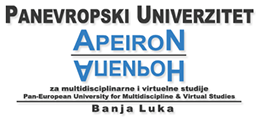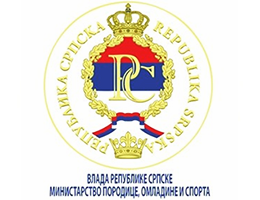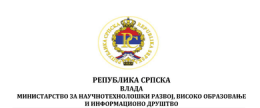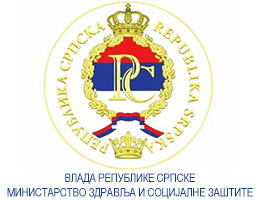Influence of the Level of Physical Activity on Symptoms and Duration of Recovery From Covid-19
Volume 13, Issue 1 (2023)
Volume 13, Issue 1 (2023)
Influence of the Level of Physical Activity on Symptoms and Duration of Recovery From Covid-19
Abstract:
Insufficient physical activity and sedentary
lifestyle have exposed most of the population with
chronicle diseases, to higher risk of infection of COVID-
19, with extremely severe consequences and exhausting
and long recovery after the illness. Regular
physical activity, as one way of prevention and faster
recovery from COVID-19, is an important priority for
improvement health and quality of life in people. The
aim of this paper is to determine the connection between
regular physical activity of the population with
the presence of symptoms and duration of recovery from
COVID-19. Total number of subjects was 100 people of
both genders (male 32 and female 68) of younger age
(age: 30-44) without existing chronicle diseases and
healed from COVID. Data of regularity of exercising,
symptoms, and recovery period were obtained by survey
of this study: Active group of subjects (A=53) in continuity
at least 3 months, two times a week, 60 minutes
and Inactive group (N=47), who never exercised, nor
they are physically active. Chi-square test was used (χ2
test differences between groups), to determine differences
of extensive frequencies. Results of the research
showed that there are statistically significant differences
between two groups (p<0.001) on the behalf of group
with active subjects, in terms of severity of symptoms
of COVID-19 and their recovery lasted shorter than
in inactive group of subjects. Study shows that regular
physical exercise has significant impact on human body
and is important factor of enhancing immune system,
which enables faster recovery and easier dealing with
symptoms of COVID-19.
Keywords:
health, physical exercising, Coronavirus, COVID-19. recovery, symptoms
Full Text:
References:
Adams G. R., Zaldivar, F.P., Nance, D. M., Kodesh E., Radom-Aizik, S., Cooper D. M., (2011). Exercise and leukocyte interchange among
central circulation, lung, spleen, and muscle. Brain, Behavior, and Immunity Volume 25, Issue 4, Pages 658-666
Ahmed, I., (2020). COVID-19—does exercise prescription and maximal oxygen uptake (VO2 max) have a role in risk-stratifying patients?
Clin Med 20: 282-284. doi: 10.7861/clinmed.2020-0111
Blair, S., N., LaMonte, M., Ј., & Nichaman, M., Z. (2004). The evolution of physical activity recommendations: How much is enough? American
Journal of Clinical Nutrition, 79(5), 913-920.
Booth, F.W, Roberts, C.K., Laye, M.J. (2014) Lack of exercise is a major cause of chronic diseases. Compr Physiol. 2012 Apr; 2(2): 1143–1211.
doi: 10.1002/cphy.c110025
Bubaš, M., Capak, K. (2022) Povratak zdravlja i snage nakon Covid-19. Vodič kroz Vaš oporavak nakon COVID-19. Printera grupa d.o.o. [in
Serbian]
Bungić, M., Barić, R. (2009) Tjelesno vježbanje i neki aspekti psihološkog zdravlja. Hrvatski športskomedicinski vjesnik. 24(2): 65-75. https://
hrcak.srce.hr/47831 Pristupljeno 12. srpnja 2021[in Croatian]
Chagas, Eduardo Federighi Baisi (2020) Physical exercise and COVID-19: a summary of the recommendations.
Chagas, Eduardo Federighi Baisi (2020) Physical exercise and COVID-19: a summary of the recommendations. Rezime preporuka. https://
www.researchgate.net/publication/343134115_Physical_exercise_and_COVID -19_a_summary_of_the_recommendations
Cuthbertson, D.J., Alam, U., Tahrani, A., (2020). COVID-19 and obesity: an opportunity for change. Therapeutic Advances inEndocrinology
11: 204201882094974 (PDF) The Correlation between Excess Weight and Duration of COVID-19 Symptoms in a Tertiary Hospital in
Amman, Jordan.
Di Gennaro F, Pizzol D, Marotta C, et al. (2020) Coronavirus diseases (COVID-19) current status and future perspectives: a narrative review.
Int J Environ Res Public Health 17: 2690. doi: 10.3390/ijerph17082690
Dodig, M. (1992.) Tjelesna i zdravstvena kultura.Rijeka: Sveučilište u Rijeci.
García-Hermoso A, Cavero-Redondo I, Ramírez-Vélez R, et al. (2018) Muscular strength as a predictor of all-cause mortality in an apparently
healthy population: a systematic review and meta-analysis of data from approximately 2 million men and women. Arch Phys Med
Rehabil 99: 2100-2113.e5. doi: 10.1016/j.apmr.2018.01.008
Gorbalenya AE, Baker SC, Baric RS, Groot RJD, Drosten C, Gulyaeva AA, Haagmans BL (2020) The species Severe acute respiratory syndrome-
related coronavirus: classifying 2019-nCoV and naming it SARS-CoV-2. Nat Microbiol 5:536–544
Halabchi F, Mazaheri R, Sabeti K, Yunesian M, Alizadeh Z, Ahmadinejad Z, et al. (2020). Regular sports participation as a potential predictor
of better clinical outcome in adult patients with COVID‐19: A large cross‐sectional study. J Phys Act Health.18: 8‐12.
Horton, R. (2012) Physical Activity. Dostupno na http://portal.saude.gov.br/portal/arquivos/ pdf/physact_complete_reduced20072012.pdf
Kim Y, White T, Wijndaele K, et al. (2018) The combination of cardiorespiratory fitness and muscle strength, and mortality risk. Eur J Epidemiol
33: 953-964. doi: 10.1007/s10654-018-0384-x
Kohut ML, Sim Y-J, Yu S, Yoon KJ, Loiacono CM (2009) Chronic exercise reduces illness severity, decreases viral load, and results in greater
anti-inflammatory effects than acute exercise during influenza infection. J Infect Dis 200:1434–1442
Koronavirus.hr (2021) O Bolesti. https://www.koronavirus.hr/sto-moram-znati/obolesti/103 Pristupljeno 15. srpnja 2021.
Laddu DR, Lavie CJ, Phillips SA, Arena R (2020) Physical activity for immunity protection: inoculating populations with healthy living medicine
in preparation for the next pandemic. Prog Cardiovasc Dis. https://doi.org/10.1016/j.pcad.2020.04.006
Liu S-L, Saif L (2020) Emerging viruses without borders: the Wuhan coronavirus. Viruses 12:130. https://doi.org/10.3390/v12020130
Lowder T, Padgett DA, Woods JA (2006) Moderate exercise early after influenza virus infection reduces the Th1 inflammatory response in
lungs of mice. Exerc Immunol Rev 12:97–111
Marić, M., & Marjanac, A. (2010). The effects of applying weight model of training to absolute strength of women. International scientific-
expert meeting of the students of sport and physical education ′′Young people about sport science and profession′′ ( 93-102). Novi
Sad: Faculty of sports and physical education University of Novi Sad. [in Serbian]
Mišigoj-Duraković, M.(1999.) Tjelesno vježbanje i zdravlje. Grafos, Zagreb: Fakultet za fizičku kulturu sveučilišta u Zagrebu. [in Croatian]
Nieman, D. C. (2000). Is infection risk linked to exercise workload? Med Sci Sport Exerc; 32 (Suppl. 7: S406-11.
Nieman, D. C. , Nehlsen-Cannarella, S. L., Markoff, P. A, Balk-Lamberton, A. J. , Yang, H., Chritton, D. B. W. , Lee, J. W. , Arabatzis, K.
(1990) The Effects of Moderate Exercise Training on Natural Killer Cells and Acute Upper Respiratory Tract Infection. Int J Sports
Med;11: 467-73.
Pedersen, B.K., Febbraio, M.A. (2012) Muscles, exercise and obesity: skeletal muscle as a secretory organ Nature Reviews Endocrinology
volume 8, pages457–465.
Pietiläinen KH et al (2008) Physical inactivity and obesity: a vicious circle. Obesity 16:409–414
Powel KE, Blair SN. (1994) The public health burdens of sedentara living habits: theoretical but realistic estimates. Med SciSports Exerc
1994;26: 851-56)
Rahmati-Ahmadabad S, Hosseini F (2020) Exercise against SARS-CoV-2 (COVID-19): Does workout intensity matter? (A mini review of
some indirect evidence related to obesity). Obes Med 19: 100245. doi: 10.1016/j.obmed.2020.100245
Sallis R, Young DR, Tartof SY, et al (2021) Physical inactivity is associated with a higher risk for severe COVID-19 outcomes: a study in 48
440 adult patients. BRITISH JOURNAL OF SPORT MEDICINE 2021;55:1099-1105.
Siordia Jr JA. Epidemiology and clinical features of COVID‐19: A review of current literature. JClin Virol. 2020; 127: 104357
Tavakol, Z., Ghannadi, S., Tabesh, M.R., Halabchi, F., Noormohammadpour, P., Akbarpour, S., Alizadeh, Z., Nezhad, M.,H, Reyhan, K.,S,
(2023). Relationship between physical activity, healthy lifestyle and COVID-19 disease severity; a cross-sectional study. Journal of
Public Health 31(2) DOI: 10.1007/s10389-020-01468-9
Warren KJ et al (2015) Exercise improves host response to influenza viral infection in obese and non-obese mice through different mechanisms.
PLoS One 10:e0129713
Wedig IJ, Duelge TE, Elmer SJ (2021). Stay physically active during COVID-19 with exercise as medicine. BRITISH JOURNAL OF SPORTS
MEDICINE 2021;55:346-347.
WHO (1997) Obesity: preventing and managing the global epidemic. Report of a WHO consultation on obesity. June 3–5, 1997. WHO/NUT/
NCD/ 98.1, i-xv, 1–276. 1998. Geneva, Switzerland:World Health Organization.
World Health Organzation (WHO). (2010). Global Recommendations on Physical Activity for Health. Geneva: WHO.
Zeigler, Z., Lawrence, J., Jamison, A., Salzano, P. (2021). Physical Activity Behaviors and COVID-19 Symptoms. OBM Integrative and Complementary
Medicine2021, volume 6, issue 3doi:10.21926/obm.icm.2103027






